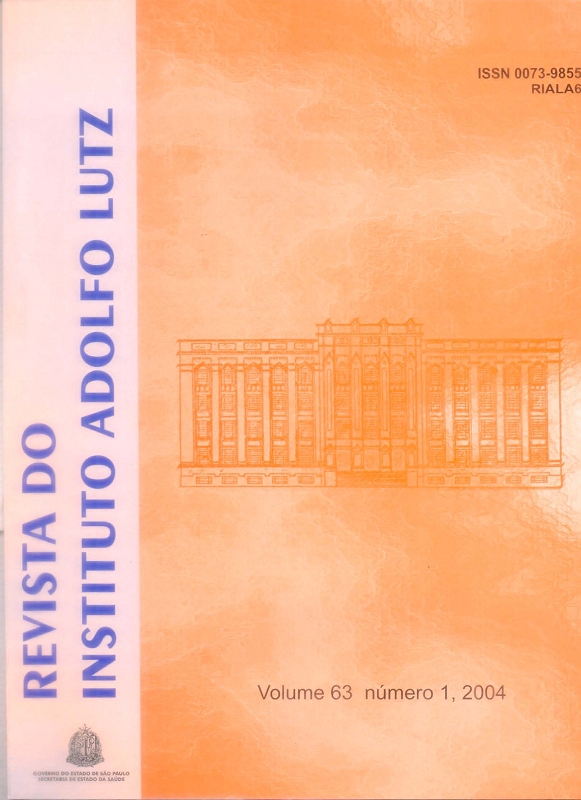Abstract
A recycling acid-lead battery company located in the county of Bauru, State of São Paulo, Brazil, contaminated the soil of country houses around it. Exposure to lead can directly occur by particulate material inhalation. Such particulate material is emitted by either industrial processes or ingestion of dust, water and food grown in contaminated areas. This study aimed at determining lead concentrations in food (herbs, roots / tubers, fruit, eggs, and milk) samples grown and consumed in the area around the company before and after the soil was remedied. The first collection was performed in 2002 after the company was debarred whereas the second, in 2003 after some areas were remedied. Lead determinations were carried
out by flame atomic absorption spectrometry. In the first collection, 39.3% of the samples analyzed were contaminated whereas in the second collection, 13.9%, considering that milk showed the greatest percentage of samples above the limit established by the current legislation. The decrease in food contamination by lead in the region was observed after some environmental interventions such as the removal of a 5-cm layer of superficial soil. In areas where there were no corrective interventions, lead levels in food remained high, indicating how important...
References
1. CETESB 2002 Avaliação confirmatória da contaminação ambiental na área de influência da indústria “Acumuladores Ájax Ltda – Recuperadora de Chumbo” em Bauru (SP). - Informação Técnica 018/ECC/EQQ/EQS/ERQ/02 v. 1 – Governo do Estado de São Paulo, Secretaria do Meio Ambiente, Companhia de Tecnologia de Saneamento Ambiental – CETESB. 42 p.
2. WHO. World Health Organization. IPCS. Environmental Health Criteria 165 – Inorganic Lead. Geneva: WHO, 1995. 300p. Publish under the joint sponsorship of the United Nations Environmental Programme, The International Labour Organization and The World Health Organization.
3. Anku, V. D.; Harris, J. W. Peripheral neuropathy and lead poisoning in a child with sickle-cell anemia. J. Pediatrics, 85:337-40, 1974.
4. Erenberg, G.; Rinsler, S. S.; Fish, B. G. Lead neuropathy and sickle cell disease. Pediatrics, 54:438-41, 1974.
5. Paoliello, M. M. B. et al. Exposure of children to lead and cadmium from a mining area of Brazil. Environ. Research Section A 88:120, 2002.
6. Snakin, V.V.; Prisyazhnaya, A.A. Lead contamination of environment in Russia. Sci. Total Environ., 256:95-101, 2000.
7. Meyer, I.; Heinrich, J.; Lippold, U. Factors affecting lead, cadmium, and arsenic levels in house dust in a smelter town in Eastern Germany. Environ. Res., 81:32-44, 1999.
8. Leroyer, A.et al. Environmental lead exposure in a population of children in Northern France: factors affecting lead burden. Am. J. Ind. Med., 38:281-89, 2000.
9. Berlund, M.et al. Impact of soil and dust lead on children’s blood lead in contaminated areas of Sweden. Arch. Environ. Health, 55:93-7, 2000.
10. Shen, X.M.; Wu, S. H.; Yan, C.H. Impacts of low-level lead exposure on development of children: recent studies in China. Clin. Chim. Acta, 313:217-20, 2001.
11. Chatterjee, A.; Banerjee, R.N. Determination of lead and others metals in a residential area of greater Calcutta. Sci. Total Environ., 227:175-85, 1999.
12. Nriagu, J. O.; Blankson, M. L.; Ocran, K. Childhood lead poisoning in Africa: a growing public health problem. Sci. Total Environ.,181:93-100, 1996.
13. Oyedele, D. J. et al. Lead contamination of soils and vegetation in the vicinity of a lead smelter in Nigeria. Sci. Total Environ., 172:189-95, 1995.
14. WHO. World Health Organization, Joint FAO/WHO Expert Committee on Food Addtives. Evaluation of certain food additives and contaminants. Geneva, 1993.
15. Piotrowska, M. et al. The spatial distribution of lead concentrations in the agricultural soils and main crop plants in Poland. Sci. Tot. Environ., 158:147-155, 1994.
16. AOAC. Association of Official Analytical Chemists. Official Methods of Analysis of the Association of Official Analytical Chemists. 16th ed., Gaithersburg, Maryland, Chapter 9, p.16, 1995.
17. Brasil. INMETRO. Orientações sobre validação de métodos de ensaios químicos. DOC-CGCRE-008 – revisão 01- março 2003. Disponível em: http://www. inmetro.gov.br. Acesso em: junho de 2003.
18. Brasil. Ministério da Agricultura. Secretaria de Vigilância Sanitária (Leis, Decretos, etc. Divisão Nacional de Vigilância Sanitária de Alimentos – DINAL -) Portaria nº 685, de 27 de agosto de 1998. Diário Oficial da União, Brasília, DF, 24 de agosto de 1998.
19. Brasil, Secretaria de Vigilância Sanitária. Divisão Nacional de Alimentos (Leis, Decretos, etc. Divisão Nacional de Vigilância Sanitária de Alimentos – DINAL -) Portaria nº 16 de 13 de março de 1990. Diário Oficial da União República Federativa do Brasil, Brasília, DF, 15 de março de 1990.

This work is licensed under a Creative Commons Attribution 4.0 International License.
Copyright (c) 2004 Revista do Instituto Adolfo Lutz
